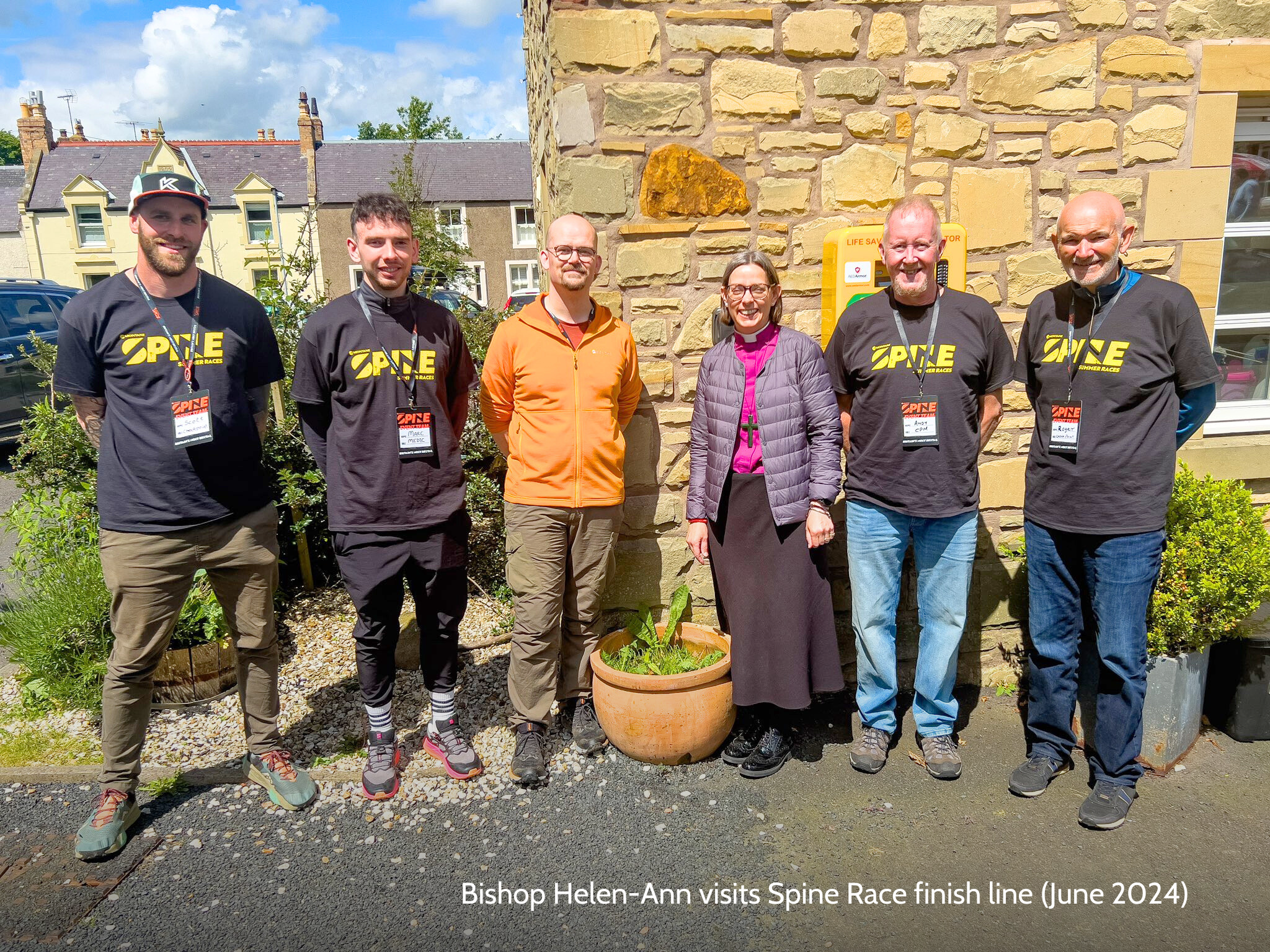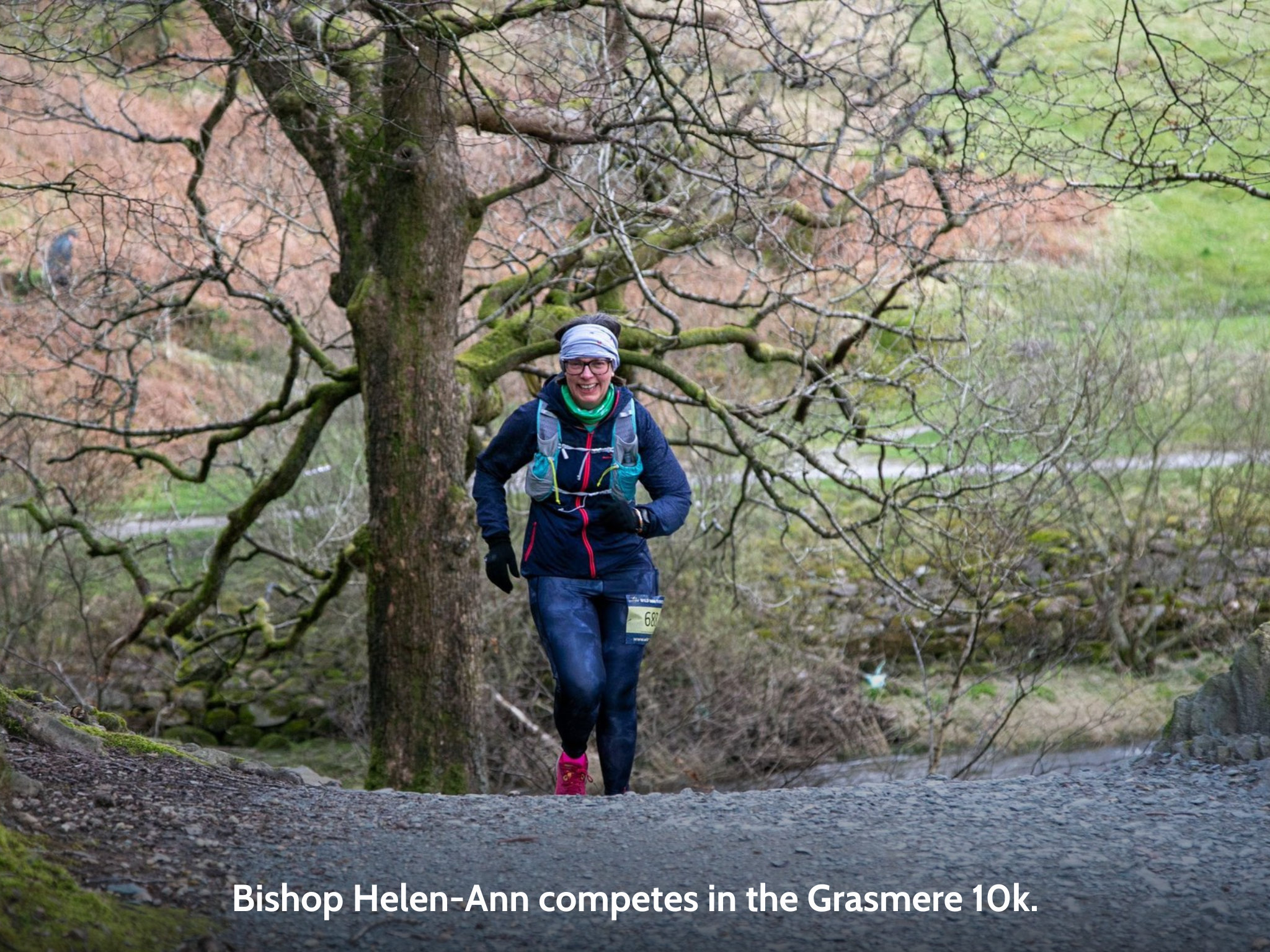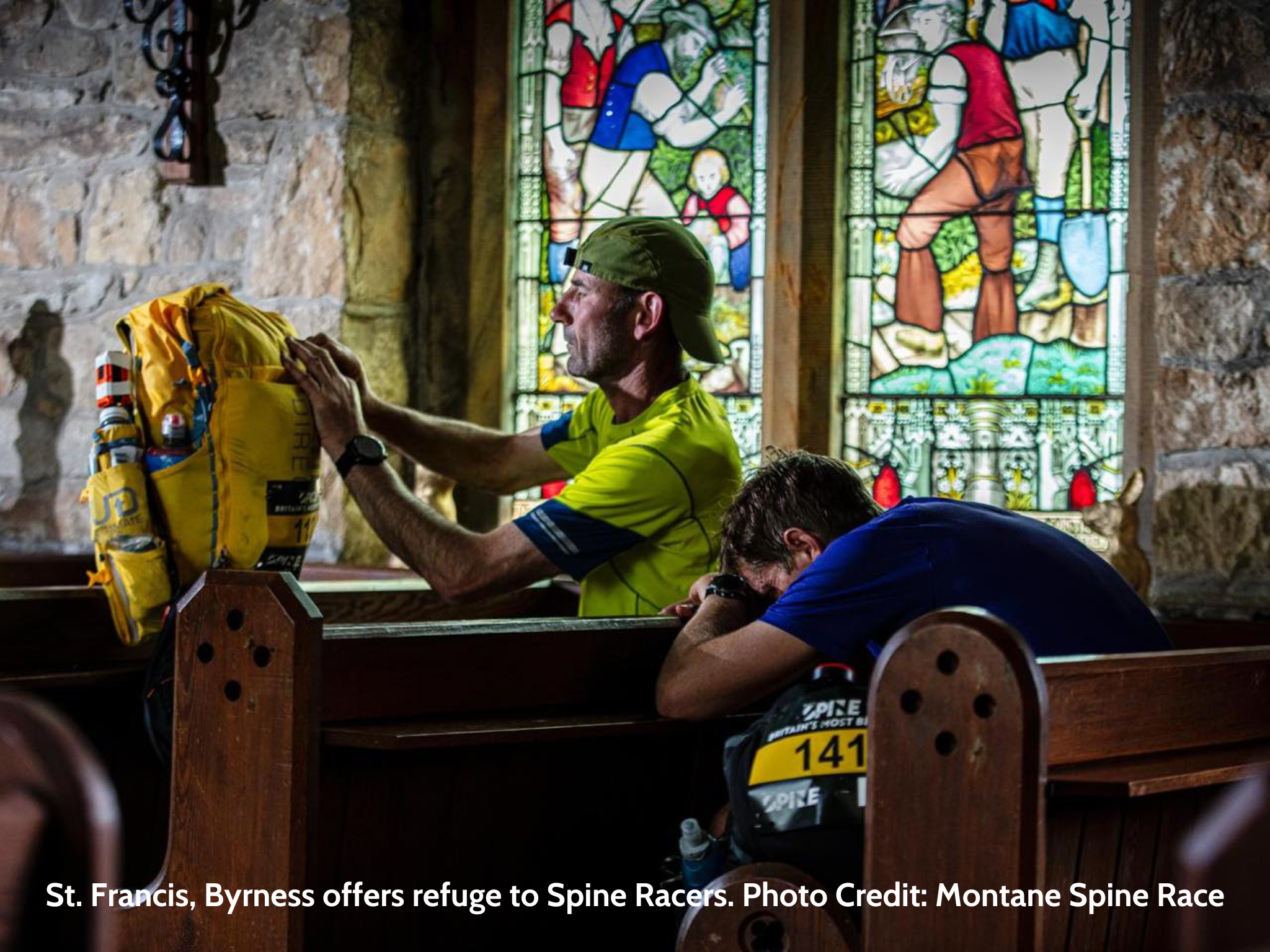
Territorio Trail Media, a Spanish media company which specialises in trail running, recently interviewed Bishop Helen-Ann after recognising her passion for running and avid following of both the Spine Race and Barkley Marathons.
Read the interview below, where Bishop Helen-Ann reflects on the parallels between ultra-running and religion.
 We first heard about your passion for running and ultrarunning when you dedicated one of your sermons to the Barkleys marathons, but we know that you are a runner and avid follower of races like the Spine race or The Wall that pass through your Diocese in the Northeast of England. How did you come across the ultra running scene and what do you like most about it?
We first heard about your passion for running and ultrarunning when you dedicated one of your sermons to the Barkleys marathons, but we know that you are a runner and avid follower of races like the Spine race or The Wall that pass through your Diocese in the Northeast of England. How did you come across the ultra running scene and what do you like most about it?
I first came across ultra-running through discovering an online documentary about The Dragon’s Back Ultra which takes place in Wales. I was fascinated by this multi-day event of endurance which combined a love of running with the amazing trail and mountain terrain. I then met Phil Harris who has completed both the Summer and Winter Spine races and who is an Anglican priest in Leeds Diocese back in 2022 where I previously served as a bishop. Hearing Phil was training for the Summer Spine in 2023 got me into dot watching as I followed him along his epic journey. My husband and I holiday most Summers in the Lake District, usually around the Keswick area and again, following athletes like Sabrina Verjee and John Kelly in their Wainwright runs brought that amazing landscape to life for me in a very real way. Ultra-events, particularly continuous races like the Barkley Marathons and the Spine Race fascinate me for the way in which they reveal the incredible endurance potential of the human body. I’m acutely aware also of the potential for failure, and the psychology that keeps people going through isolation and incredibly challenging conditions.
What brought you then to talk about the Barkleys Marathons during your service? Is it the spirit of collaboration between the runners? I always thought that was a prime example of how people can get together to achieve extraordinary things.
I’d heard about the Barkley Marathons and there seemed to be a real buzz around the 2024 edition, so I decided to tune in via social media (no GPS tracking for this one!). It so happened this year that the BMs took place just before Holy Week (the week that leads up to Easter day). I was in Grasmere in the Lakes preparing for a 10k trail race and like many others around the world was busy refreshing social media wondering if Jasmin Paris had made the cut-off time. When Keith (Dunn, who handles their social media) posted that she had, late evening, I let out a great shout; what an incredible achievement. I knew then that I needed to tell my clergy about what I’d learnt through the Barkley Marathons, about perseverance, encouragement, sacrifice and giving way, most notably when Jared Campbell let Jasmin choose which direction she wanted for the final loop. On Maundy Thursday, all of the priests and clergy in my diocese gathered in Newcastle Cathedral to renew their ordination vows, and my sermon shared my Barkley Marathon reflections in a way that I hope inspired them in a new way.
How did your church goers take the sermon you think? I guess not many people had heard of the race before!
Indeed! I don’t think many had heard of the Barkley Marathons before, let alone had thought about the connections between ultra-running and the journey of faith. I was so enthusiastic about what I’d discovered though I think it made them curious and want to find out more.
 That collaborative spirit is not unique to the barkleys marathons, I often say if you have lost hope in humanity just go to an ultra race. And races like the Spine feel like a close family, or a community not dissimilar to a church. Why do you think we have this energy in the trail running community?
That collaborative spirit is not unique to the barkleys marathons, I often say if you have lost hope in humanity just go to an ultra race. And races like the Spine feel like a close family, or a community not dissimilar to a church. Why do you think we have this energy in the trail running community?
I completely agree! I feel a very close connection with the Spine race, mostly because quite a lot of the it (the second half) goes through my diocese. I know the short section of Hadrian’s Wall which forms part of the Spine well, in fact I’ve known it since I was a child (I grew up in northeast England) and ran it a few days before I was installed as Bishop of Newcastle (I decided a running retreat was the best way of preparing for this new phase in my journey!). One of our churches, St Francis, Byrness is right on the Pennine Way and has offered its quiet ministry of shelter and hospitality to Spine athletes across the years. I find that profoundly moving. Personally, I see so much in the ultra-community that our churches can learn from and also be affirmed in through giving selflessly to one another and being a beacon of support and encouragement. My visit to the finish line of the Spine at Kirk Yetholm was one of the most affirming experiences I have had as a bishop and has given me a lot to reflect on in the months ahead.
I was recently talking to a non runner friend about ultra races and he thought they seemed like a pilgrimage. Do you think ultra runners are just modern pilgrims? Out on a long journey, sometimes getting a personal transformation and coming back to our normal life? I would even say that the Border Hotel in Kirk Yetholm or Frozen Head State are for some people a Holy place.
I agree. I do think ultra-runners are like modern pilgrims, because right through the history of Christian pilgrimages, a path has been mapped out for individuals to travel long distances, testing themselves and discovering that by literally putting one foot in front of the other they are somehow drawing closer to the divine, or the spiritual entity they are connected to. I think there is much in common between ultras and intentional journeys of faith. It so happens in my diocese that we have the ancient footsteps of many pilgrims like St Cuthbert who journeyed from Melrose to Lindisfarne and all over Northumberland. And yes, many pilgrimages end at a destination filled with meaning and ritual: the Camino de Santiago; the corner wall of the Border hotel in Kirk Yetholm, the Moot Hall in Keswick, the Cape Wrath lighthouse, and of course, the yellow gate in Frozen Head State Park. Many of these places are filled with memory and meaning, layers of human endeavour, of highs and lows and deep emotion. I would say even these are like thin places, where you can touch something of the power of the human spirit. They leave a lasting impact, and change your soul, and that’s what truly inspires me even in my comparatively shorter running endeavours week by week!